By Joe Bartosh
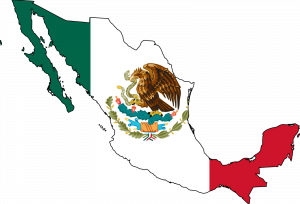 The story of the Latinx community should not be a difficult tale to tell. Unfortunately, the Latinx community–especially those from Mexico–are marginalized in United States history. Today many people look at the Latinx community as newcomers to the United States, but the truth is they have been here since the inception of the country. Before the Mexican American war in 1846 Mexico included states like Texas and California and many others. The war started in 1846 over a territorial dispute in Texas, and went on for two years ending in Mexico selling land to the United States. In February of 1848 the Treaty of Guadalupe Hidalgo was signed. The treaty was the agreement signed by Mexico and the United States that turned over 525 thousand acres of territory to the United States, created the Southern Border at the Rio Grande River and gave all rights to the territory of Texas.
The story of the Latinx community should not be a difficult tale to tell. Unfortunately, the Latinx community–especially those from Mexico–are marginalized in United States history. Today many people look at the Latinx community as newcomers to the United States, but the truth is they have been here since the inception of the country. Before the Mexican American war in 1846 Mexico included states like Texas and California and many others. The war started in 1846 over a territorial dispute in Texas, and went on for two years ending in Mexico selling land to the United States. In February of 1848 the Treaty of Guadalupe Hidalgo was signed. The treaty was the agreement signed by Mexico and the United States that turned over 525 thousand acres of territory to the United States, created the Southern Border at the Rio Grande River and gave all rights to the territory of Texas.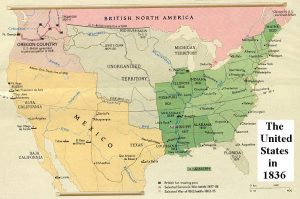
Emigrating to the United States from Mexico started off slow in the 19th century and increased rapidly after 1960. People came to the United States for many reasons. A better life and family are the biggest reason people move to the United States. A Pew Research poll claims most believe life is better in the United States. 57 percent surveyed said most people who move from Mexico enjoy a better life in the U.S. Those who keep in contact with their friends and relatives say they have achieved their goals.(2)
In 2016 the Latinx community made up 16.7 percent of the U.S. population, making them the second largest ethnic group in the country. The Latinx culture can be seen all over the country especially in those southwestern states once occupied by the country of Mexico and many have made a place in Kansas City.
The history of the Latinx community started in the mid nineteenth century. In 1830, the newly formed Republic of Mexico opens up trade with the United States via the Santa Fe Trail, creating a corridor for Mexican immigration into the United States. Many settled in Kansas and Missouri. From 1900-1914, the Kansas City Southern railroad was completed, providing a direct north-south route from Kansas City, MO., to the Gulf of Mexico. It joined the Santa Fe Railroad and the Frisco Railroad in Kansas City, KS., as one major railroad companies in the Kansas City area. By 1914, there were more than 12 rail lines entering Kansas City, KS., and Kansas City, MO. Railroad companies recruited Mexican workers to help maintain railroads and many of the first Latinx communities began as a compact group of railroad workers living in actual rail yards in boxcars. These neighborhoods were situated primarily in Argentine, Armourdale, and Rosedale in Kansas, and the Westside and West Bottoms in Missouri.
Where are the stories of the Latinx people in Kansas City? They are scattered all over the metropolitan area. From Olathe to Independence and from Platte City to Belton, the Latinx community have been a part of this area starting in the 19th century. We do not know how many in those early days would consider themselves a part of today’s LGBT community, but there had to be a few. 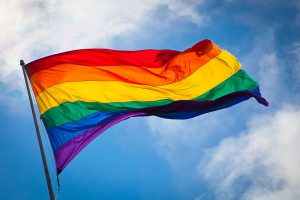 Coming out is a personal and difficult process. Depending on age some people waited a long time to come out, or some jumped up one day and said being gay is who they were. The struggle of coming out is personal, and the timing is up to the individual.
Coming out is a personal and difficult process. Depending on age some people waited a long time to come out, or some jumped up one day and said being gay is who they were. The struggle of coming out is personal, and the timing is up to the individual.
Here are stories from two men who came to the United States from Mexico twenty years ago and what their lives have been like. Jose Mario Canedo and Sergio Chavez are part of the LGBT community in Kansas City. They both faced challenges like the language when they arrived, but came out on the other side. What comes next is their story. Mario Canedo has been in the Kansas City area for over twenty years now, and talks about the journey.
Mario Canedo came to the United States for fun at first, then realized it was a great opportunity to start his own business.
Mario lived in a rural town in Mexico and has fond memories.
Mario is a part of the LGBT community, but does not want to be labeled as gay, straight or anything else. He explained to me that is what causes division.
Mario was always expected to go to college. His mother a fashion designer and accountant attended a Catholic University in Arizona, and pushed Mario to do whatever he dreamed.
Coming to a new country was an easy decision for Mario. He wanted to be on his own and explore a new world. Everyone assimilates in their own way. Mario felt the best teachers were those who grew up in the United States.
When Mario moved to the U.S. he had a job lined up. The local radio station hired him to be part of a talk show, produce content and other tasks. But, he did not know English. He told me this was his biggest barrier to being in the country.
The American dream is the old story of why people flock to the United States. Mario feels a dream is a dream.
The homophile movement turned into the gay liberation movement the day the police raided the Stonewall Inn on June 27, 1969. That day a police raid on the Stonewall arrested 13 people inside the bar and what happened after changed the world for the LGBT community. Six days of street rebellion where the cops found themselves trapped inside the Stonewall Inn after harrassing gay men, drag queens and homeless youth at the Stonewall chanting “gay power” and “we want freedom”. The Stonewall was used as a defacto community center because it let in anyone who needed a place to be especially homeless youth who had no place to go due to family and institutional rejection. The men and women who frequented the bar were repeatedly harassed. This was a moment when enough was enough. They took matters into their own hands and stood up. The Stonewall Riots paved the way for the Gay Liberation movement. This movement started in the late 1960’s through the mid 1980’s. Gay and lesbians were encouraged to engage in “radical direct action”. The movement also encouraged gays and lesbians to live life as an openly gay person. To commemorate the Stonewall Riots there would be political marches in June called gay liberation marches that turned into PRIDE Celebrations. Mario talks about Latino Gay Pride and how he started the celebration.
The United States was the focal point of the HIV/AIDS epidemic of the 1980’s. The disease was first seen in gay men in California and New York in 1981. In the first decade of the disease it brought death and devastation to the gay community. AIDS was rampant in the 1980’s, peaked in the 1990’s and then leveled off by 2000. In the year 2000 over 774,467 people had the AIDS virus, and 448,060 had died. The African American and Latinx communities are affected disproportionately with HIV/AIDS. The Centers for Disease Control revealed that if HIV rates continue as they are one out of every four Latino gay and bisexual men will become HIV-positive in their lifetime. Latinos are 17 percent of the U.S. population, but represent 24 percent of new HIV diagnoses in 2014. The stigma of being gay in the Latinx community is a big factor for high rates of HIV. Illiana Gillian, director of care at the AIDS Foundation of Chicago said “there’s a fear that if they’re seen going in for an HIV test, they’ll be thought to be gay or promiscuous, both of which have negative connotations in certain subsets of this population.” Today HIV/AIDS is still a problem, especially with communities that continue to put a stigma on being gay, but with new medical advances HIV/AIDS is no longer a death sentence.
In the dictionary machismo is defined as strong or aggressive masculine pride.
Mario says he does not get offended easily. It did not take him long to get use to occasional jokes and sarcasm that friends would use from time to time. He does explain a couple times that he thought about the appropriateness of situations he was in.
Mario has a lot of wisdom. He puts life into a little box, ties a bow on it and helps a person understand how important each moment is. Here are his parting thoughts.
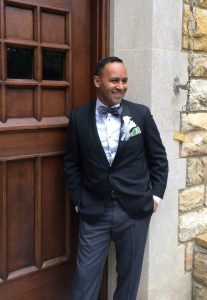
Sergio Chavez was born in Juarez and then his family moved to the capital Chihuahua. He comes from a traditional family that he explains is the size of a sports team rather a typical family. He has lived in the United States for over twenty years and like Mario he did not know the language, but that did not stop him from being successful in a country that was foreign to him.
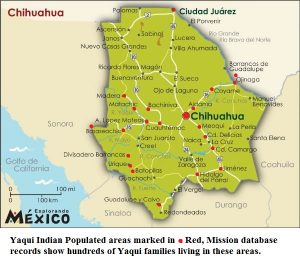
Sergio explains why he decided to move to the United States.
Sergio explains the feelings he had when he decided to move to a new country.
Sergio was confident he could make it anywhere. He went to college, he is a hard worker and can get along with anyone. The only thing he had to do was learn the language. Sergio explains how he tackled this obstacle.
One question that is asked to members of the LGBT community is when did you know. It is a weird question for some and for others they have complete clarity. Sergio tells when he knew he was gay.
The dynamics between siblings is different for most families. The one constant theme is fighting and bickering between brothers and sisters. Sergio explains the family dynamic.
Family is important in any culture. It is really important in the Latinx community. Sergio talks about how his brothers did bully him, but were more protective of him because he is family.
Sergio’s grandmother played a major role in his life. She was his role model, care taker and inspiration.
Coming out to family is difficult and personal for most members of the LGBT community. Sergio explains how he came out.
Everyone wants their family to accept them for who they are. Pushed by his aunt he was living with in Kansas encouraged him to tell his whole family.
The ability to marry the person you love is a right that everyone, but members of the LGBT community could engage in until 2015.
The importance for everyone to have the right to get married.
Sergio started working in a hotel in El Paso TX when he moved to the United States. That experience helped him start his own business in the Kansas City area. Sergio explains he is basically the help.
Sergio gives his thoughts on America.
Sergio has a nephew that is gay.
The queer word.
Many people come to the United States for a new and better life. Mario and Sergio did not feel like Mexico was a welcoming place to be a gay man. They loved their country but like many people they made the journey. The United States is not and has not been perfect especially for minorities. The gay rights movement still battles discrimination from government and people. Progress has been made in the short twenty years Sergio and Mario have called America home. HIV/AIDs is better understood, gay men and women can openly serve in the military and marriage is a right for all citizens. Equality never happens in one step or one day. Unfortunately it is an ongoing struggle for a lot of people. America is a democracy ran by people whose ideas are forever changing. Sometimes we take a step forward and then two steps back. People still want to come to this country because even at its worst there are more paths to a better life. Let’s hope they keep coming. Sergio and Mario are inspiring people. Their life stories have one major theme. If you work hard and want to be better anyone can make a positive change. Those coming to the United States have that same spirit in mind. Just like the Latinx people of the mid 19th century those today also want a better life for themselves and their family.
Bibliography
Bean, Frank D. At the Crossroads: Mexico and U.S. Immigration Policy. Rowman & Littlefield, 1997.
D’Emilio, John. Sexual Politics, Sexual Communities: The Making of a Homosexual Minority in the United States, 1940-1970. University of Chicago Press, 1998.
Flores, Antonio. “How the U.S. Hispanic Population Is Changing.” Pew Research Center. September 18, 2017. http://www.pewresearch.org/fact-tank/2017/09/18/how-the-u-s-hispanic-population-is-changing/.
“GLAMA at UMKC – News.” UMKC University Archives | Edgar Parks Snow Papers | Library.umkc.edu. http://library2.umkc.edu/spec-col/glama/news.htm.
Human Rights Campaign. “Stances of Faiths on LGBTQ Issues: Roman Catholic Church.” Human Rights Campaign. https://www.hrc.org/resources/stances-of-faiths-on-lgbt-issues-roman-catholic-church.
“Gay Liberation.” Wikipedia. April 26, 2018. http://en.wikipedia.org/wiki/gay_liberation.
“HIV and AIDS — United States, 1981–2000.” Centers for Disease Control and Prevention. http://www.cdc.gov/mmwr/preview/mmwrhtml/mm5021a2.htm.
HIVPlusMag.com. October 13, 2016. http://www.hivplusmag.com/treatment/prevention/2013/10/22/why-are-latinos-higher-risk-hiv.